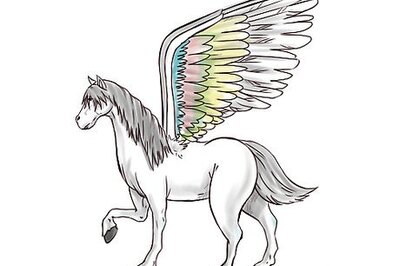
views
window._taboola = window._taboola || [];_taboola.push({mode: 'thumbnails-a', container: 'taboola-below-article-thumbnails', placement: 'Below Article Thumbnails', target_type: 'mix' });Latest News
Monsoon depressions and cyclonic storms of North Indian Ocean (NIO) have been showing long period cyclic changes and decreasing trends in their numbers, going by the data from 1891 to date, according to a recent study conducted by the Department of Atmospheric Science of Cochin University of Science and Technology.
Both exhibit a four-decade oscillation in their annual frequency which is unique to NIO basin, although they differ in intensity, asymmetry of winds around the centre, tilt of their axis of rotation, the vertical variation of wind in their environment and season and location of their genesis, according to K S Krishnamohan, who conducted a research study under the guidance of K Mohanakumar, Dean Faculty of Environmental Science and P V Joseph, Emeritus Professor, Department of Atmospheric Science.
Monsoon depressions occur during June to September and cyclonic storms occur during both the pre monsoon months of April and May and post-monsoon months of October to December. The study shows that the annual number of monsoon depressions and tropical cyclones, both large vortices in the atmosphere that form over the ocean, is coming down over the years.
However, monsoon depressions are decreasing at a faster rate than cyclonic storms. Monsoon depressions occur when the monsoon current flowing through peninsular India is strong. The stronger the current, more the number of depressions.
These depressions which numbered about 10 during monsoon of 1950s reduced to four by 2010. As an aftermath of this, there is a reduction in the strength of the monsoon current flowing through peninsular India by 20 per cent.
Rapid warming of equatorial central Indian Ocean during the period was found to be the cause of this weakening of the monsoon winds.
The cause for the rapid warming of the Indian Ocean is being studied, said both the professors.
Both monsoon depressions and cyclonic storms showed a four-decade oscillation in their annual frequency of occurrence. In recent years both were more frequent in the 1990s as shown in the picture.
The FDO in cyclone frequency was found to be associated with the change in the strength of the low-level wind flow near equator.
Cyclic change in ocean surface temperature distribution over the Indian Ocean was found to be the cause. The four-decade oscillation in monsoon depression frequency is related to the cyclic change in the monsoon wind flow through peninsular India.
Krishnamohan, who is proceeding further with the study as part of his PhD work, presented the results obtained so far at the recently held Second International Conference on Indian Ocean Tropical Cyclones held under the auspices of the World Meteorological Organisation and India Meteorological Department in Delhi.
















Comments
0 comment